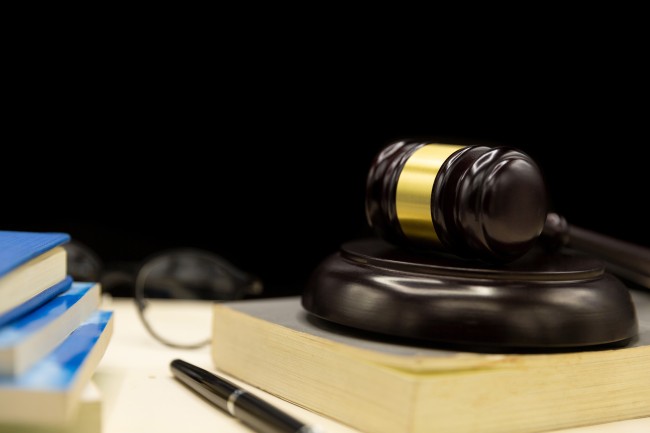In the corridors of Camp Lejeune, a U.S. Marine Corps base in North Carolina, a silent menace once lurked in the water supply. With the contamination spanning from the 1950s to the late 1980s, the contaminated water at the base adversely affected approximately one million people.
Hazardous substances like TCE and PCE have left a legacy of suffering for those who lived and served on the base. For those impacted by Camp Lejeune’s contaminated water, pursuing justice is not merely a right but an essential course of action.
In this article, we will discuss a comprehensive roadmap that will empower individuals navigating the complicated process of initiating a Camp Lejeune lawsuit.
Understanding the Contamination
To effectively build your Camp Lejeune lawsuit, begin by understanding the contamination that has adversely affected countless lives.
Investigate the specific contaminants found in the contaminated water. ATSDR notes that these include volatile organic compounds (VOCs) like trichloroethylene and perchloroethylene.
Research the timeline and extent of the contamination, providing a clear picture of the duration and intensity of exposure. With this information, you can establish a direct link between the toxic substances present in the water at Camp Lejeune and your health issues.
Gathering Medical Records
A critical aspect of your lawsuit is the compilation of comprehensive medical records. Work closely with healthcare professionals to document and detail the health problems associated with Camp Lejeune’s water contamination. Legal Desire notes that medical records can also help establish lost income due to time taken off work.
Ensure that your medical records clearly establish a connection between the contaminants found in the water and the health conditions you are facing. Consulting with medical experts who can testify to this correlation strengthens your case and provides a solid foundation for seeking compensation.
Identifying Responsible Parties
Determining the entities responsible for the Camp Lejeune water contamination is a crucial step. Research and investigate whether the U.S. government, private contractors, or other entities played a role in the contamination.
Understanding the responsible parties is crucial for targeting the correct defendants in your lawsuit.
Legal accountability may vary depending on the circumstances, and a precise identification of those responsible ensures that your legal actions are appropriately directed. This increases the likelihood of a successful outcome.
Selecting the Right Attorney
Choosing the appropriate attorney is a pivotal step in the success of your Camp Lejeune lawsuit. The best lawyers for the Camp Lejeune lawsuit are the ones with expertise in environmental law, toxic torts, and military-related cases.
Seek referrals from trusted sources or review online testimonials to gauge an attorney’s track record in handling similar cases. During initial consultations, inquire about their experience with Camp Lejeune lawsuits and their understanding of the complexities involved.
Assess their commitment to your case and communication style. Ensure your chosen attorney has the resources and determination to navigate the intricate legal terrain. This will provide you with the best possible representation for a successful outcome in your pursuit of justice.
Filing Your Lawsuit
Once thoroughly prepared, it’s time to initiate the legal proceedings by filing your lawsuit. Adhere to the statute of limitations, ensuring that your claim is timely and compliant with legal requirements.
TorHoerman Law notes that your attorney will guide you through the paperwork, ensuring that all necessary documents are properly filed. Initiating the lawsuit promptly is crucial for preserving your rights and positioning your case for a favorable resolution.
Discovery and Evidence Collection
The discovery phase is a critical stage in your lawsuit, where both parties exchange information. Forbes notes that During the discovery phase, the parties have the opportunity to ask each other questions, exchange evidence, and hold depositions.
Work closely with your legal team to gather and present evidence supporting your claims. This may include documents related to the water contamination, medical records, witness testimonies, and expert opinions.
Thorough evidence collection strengthens your case, providing a compelling narrative that supports your allegations and increases the likelihood of a favorable outcome.
Settlement or Trial
As your lawsuit progresses, be prepared to evaluate settlement offers from the defendants. Carefully assess the terms and consider the potential benefits and drawbacks of accepting a settlement.
Your legal team will guide you in making an informed decision based on the specifics of your case. If a fair settlement proves elusive, be ready to go to trial.
Your legal representation will present a compelling case, leveraging the gathered evidence and expert testimonies to advocate for the compensation you deserve.
Navigating a Camp Lejeune lawsuit requires understanding contamination, gathering solid medical records, identifying responsible parties, and choosing a skilled attorney. Timely filing, comprehensive discovery, and thoughtful evaluation of settlement options are vital.
This roadmap empowers victims to pursue justice, emphasizing the resilience needed to uncover the truth and seek accountability. With determination and legal expertise, affected individuals can strive for a fair resolution that provides hope for healing and compensation.
